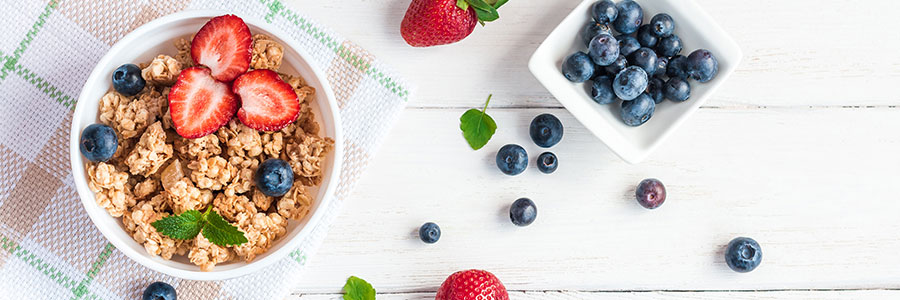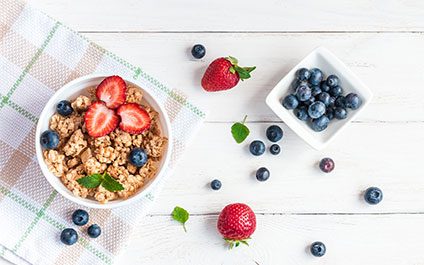
If you know a little about me, you know that I eat a plant based diet. And one of my previous blog posts talks about the improtance of protein, where to get it and how much you need. I wanted to create a follow up post on that one to shine some light on my own diet. I apologize ahead of time, this one is a little lengthy, but is full of TOTALLY important info! Please read to the end:)
The decision to go plant-based was a decision I made for health (I grew up with mad digestive issues…) and ethical reasons (being the animal lover I am once I started reading up on the meat industry it was an easy change!) and has suited me wonderfully. I fully understand that this is not for everyone, which is why may purpose here is not to “convert” you to veganism or indoctrinate you with my plant based opinions...but I do want to reveal some simple ways to incorporate some plant-based methods of eating that will help your body feel totally balanced and invigorated, while giving you some educational jewels about the thing people ask me most about… protein? where do you get your protein??! This is the first question I get asked when people find out that I am vegan, the MOST common question posed to anyone vegan or vegetarian and, honestly is a little annoying…People who are not educated in health or nutrition assume that you just don’t eat at all when you are vegan, like you just sit around munching on lettuce leaves all day. I even had someone ask me “so you just don’t like to eat, you don’t like food?” As if the only thing to eat on this planet is meat! It is so disheartening to know that so many people are just completely uneducated about proper nutrition and where proper nutrition comes from; and for the record I LOVE food! So let’s look at where a proper, healthy, plant based protein comes from. And, even if your diet isn’t based on plants, everyone can benefit from eating more plants and veggies, right? This one is a little longer than some of my other posts, but please read through because you’ll want to know everything here!
Let’s look at protein in general first. The key is to choose QUALITY protein to serve your needs and the variety of sources that are available. You can look at numerous studies right now and read how researchers have linked high protein diets to cancer or how people eating a high protein diet are going to die (seriously, google it, you’ll see what I mean). While these eye catching, melodramatic headlines might have some truth behind them, it’s important to know the whole story, and that is that these studies are done based on people eating a TON of red meat and animal protein. Again, I am not here to guilt you into eating a plant based diet or ‘convert’ you to veganism, but these studies do raise some crucial points that I want to bring up. First, too much red meat is bad, PERIOD. It is high in saturated fat, it raises cholesterol, it messes with the alkalinity of your body which can make you sick. There are pure, sustainable sources of red meat (i.e. grass fed beef) but it should still be eaten in moderation. That being said, there are other sources of animal protein out there that aren’t as detrimental to your overall health. My advice to approaching this meat dilemma is simply this: always change it up and source well. Find a source that you like that you can cook multiple ways (organic chicken and wild fish) , and then add in some plant based protein throughout the week so that you are not eating like a total carnivore. Omnivores (those that eat plants and animals) tend to have fewer nutritional deficits in terms of vitamins and minerals, so even if you choose to eat meat, fill your plate with all kinds of protein sources, don’t leave out the plant sources.
Now to your burning question: Where is there protein in plants, you might ask? Well funny you ask because there are many plants (vegetables or other plant based sources) that actually have a higher protein content per calorie that animal sources! Plant based proteins like spirulina, hemp, tempeh, spinach, broccoli…all of these are chock-full of protein per calorie. Now don’t get me wrong you’d have to eat a gallon or 2 of broccoli to get the same amount of protein that is in a piece of chicken, but my point is, there is protein in plants and there are many delicious and nutritious options out there to keep you from getting bored of eating the same frozen old veggie burger, and to keep and maintain a well-built nutritional arsenal (AKA a friggin bomb immune system built on vitamins and minerals!) to catch all the goodness mother nature has given us to consume.
The good news about getting plant based protein in this day and age is that it is everywhere. Hemp seeds, chia seeds and plant based protein powders were definitely not found in abundance 10 or even 5 years ago. There are so many option out there now, so here is a everything you need to know about plant based protein sources.
First there are plans based protein powders. There used to only be a couple of brands out there that offered some pretty pricey options, but now everyone is jumping on board and even some grocery store chains have their own brand. But I will tell you buyer beware: these are not all created equal. Soy protein powders tend to be extremely processed and can have a negative effect on your hormone levels when eaten in abundance, so I stay away from any protein powders that have soy in them. The most quality protein powder sources are going to come from pea protein, hemp protein, as well as those with other seeds (like flax, chia, sunflower etc) or a combination of these. I like to make sure the powders I drink are also organic, non GMO, and don't have any fillers. I am partial to the brand Garden of Life, they are all made with quality ingredients and man of them also contain probiotics and amino acids which is pretty dang good bang for you buck. There are other great brands though, just makes sure you read labels and see what ingredients are on there.
Next let’s look at legumes. You might have heard the word before but don’t know exactly what it is. A legume is any plant that bears a fruit in side a pod; so think soybeans, peas, peanuts etc. Some people (the paleo crowd) will tell you to steer clear of legumes because they’re bad, ad while this can be partly true as some people have a hard time digesting these, there are many health benefits for non-meat eaters, or those trying to find alternative protein sources. Legumes like lentils and black beans provide great antioxidants and are a great source of protein and have very little affect on your blood sugar. Lentils are my go to if I am going to eat legumes, they pack the best punch with 15-18 grams pf protein per serving. If you’re worried about getting all fart-y and stuff with all the beans, try soaking them in water overnight before cooking them (this breaks down the enzymes to make them more easily digested and the nutrients more readily available to your body) and then as you’re cooking them, scrape off all the bubbles and foam that rises to the top, as this gas can cause bloat during digestion.
Ancient grains can also be a valuable sources of protein. I know, I know, “grains are bad” “carbs are bad” blah blah blah. While this is a topic for another day (don’t worry I’ll et to that one soon!), I will say carbs are not bad and grains are not evil. So, that being said, quinoa, faro and amaranth are all great sources of protein (8-10 grams per serving) as well as other important nutrients like fiber, antioxidants, vitamin B, and other vitamins and minerals. Here is a tip: similar to beans, you can get more out of grins like these by socking them in water overnight to let them “sprout”. This will release enzymes that your body will be able to soak up more easily during digestion
Then there are nuts (and nut butters) like almonds, walnuts, cashews and brazil nuts that contain protein as well as healthy fats. While these do contain anywhere from 6-8 grams of protein, they are also high in fat, which can add up quickly, so because when snacking mindlessly… Nut butters are another good easily measurable option that can help with portion problems. In this same category are seeds like chia, flax, sesame, hemp and sunflower) that are a great way to add some healthy protein and fat to any meal, as they can be sprinkled on top of anything or added to your smoothie
Last on the list are plant based meat substitutes. Now, I know the to plant-based-diet rookie, these meat substitutes can be a little peculiar, mysterious, and maybe a little funky, and in many cases I would tell you to stay away from meat substitutes. BUT, not all options are bad. With the increase of plant-based alternatives, many companies are doing great job of creating quality sources of meat substitutes. Some guidelines to follow though; watch out for ingredients like soy concentrates and textured soy, these are highly processed, choose non-GMO and certified organic where possible (there are a lot of options out there in these categories), and try to keep it gluten free. I don't say this to harp on gluten here, but typically when there is gluten in these meat subtitles it is because it has wheat protein and this is highly processed. These are OK to eat on occasion, but I wouldn’t make habit out of it. There is also tofu (choose organic and sprouted where possible), and then even better is tempeh, which is a fermented version of soybeans and is full of probiotics. When buying pre-made meat substitutes like burgers or “chicken” strips, just make sure you read labels since many are filled with additives, sugar or some other unrecognizable ingredients.

